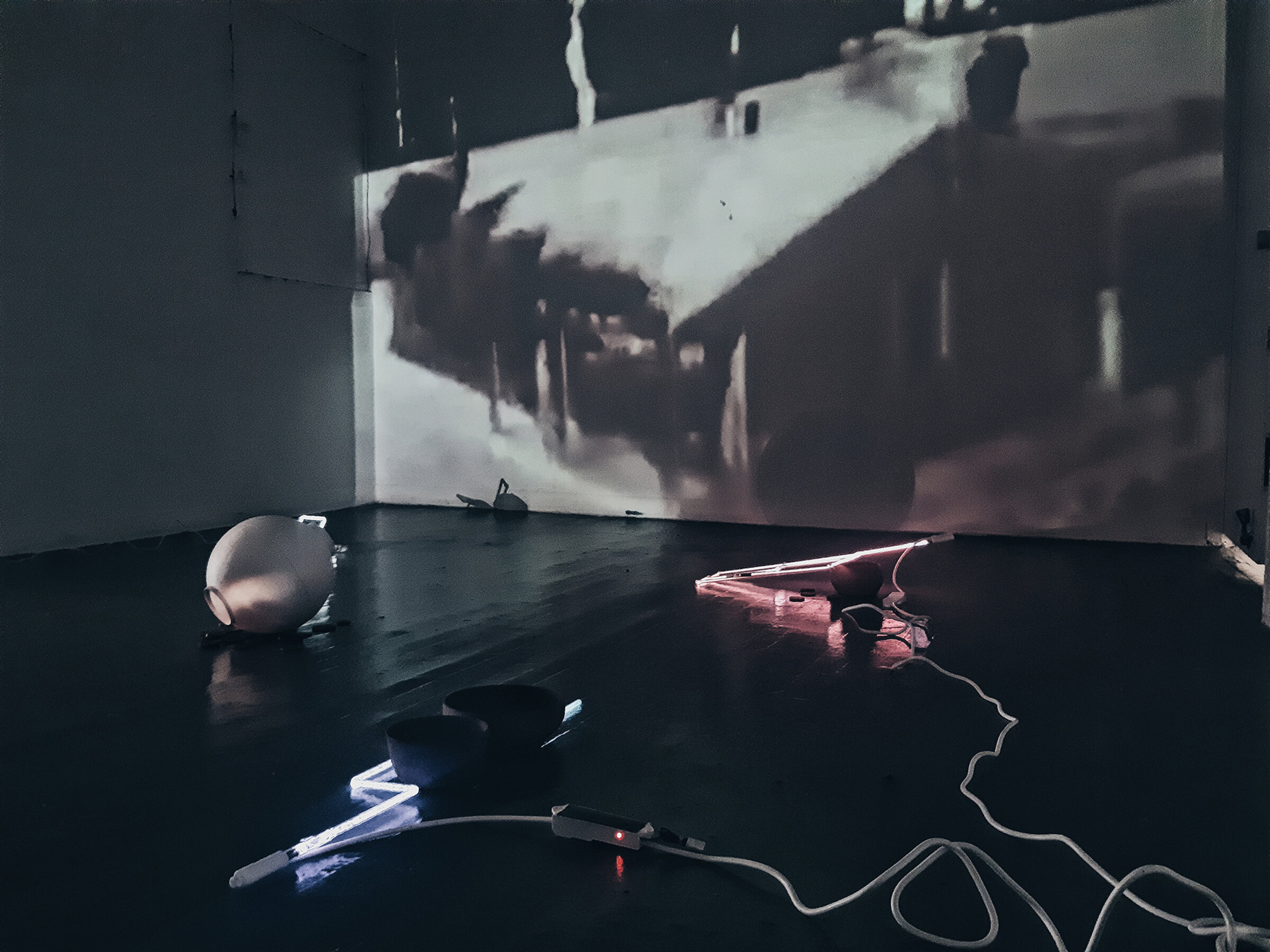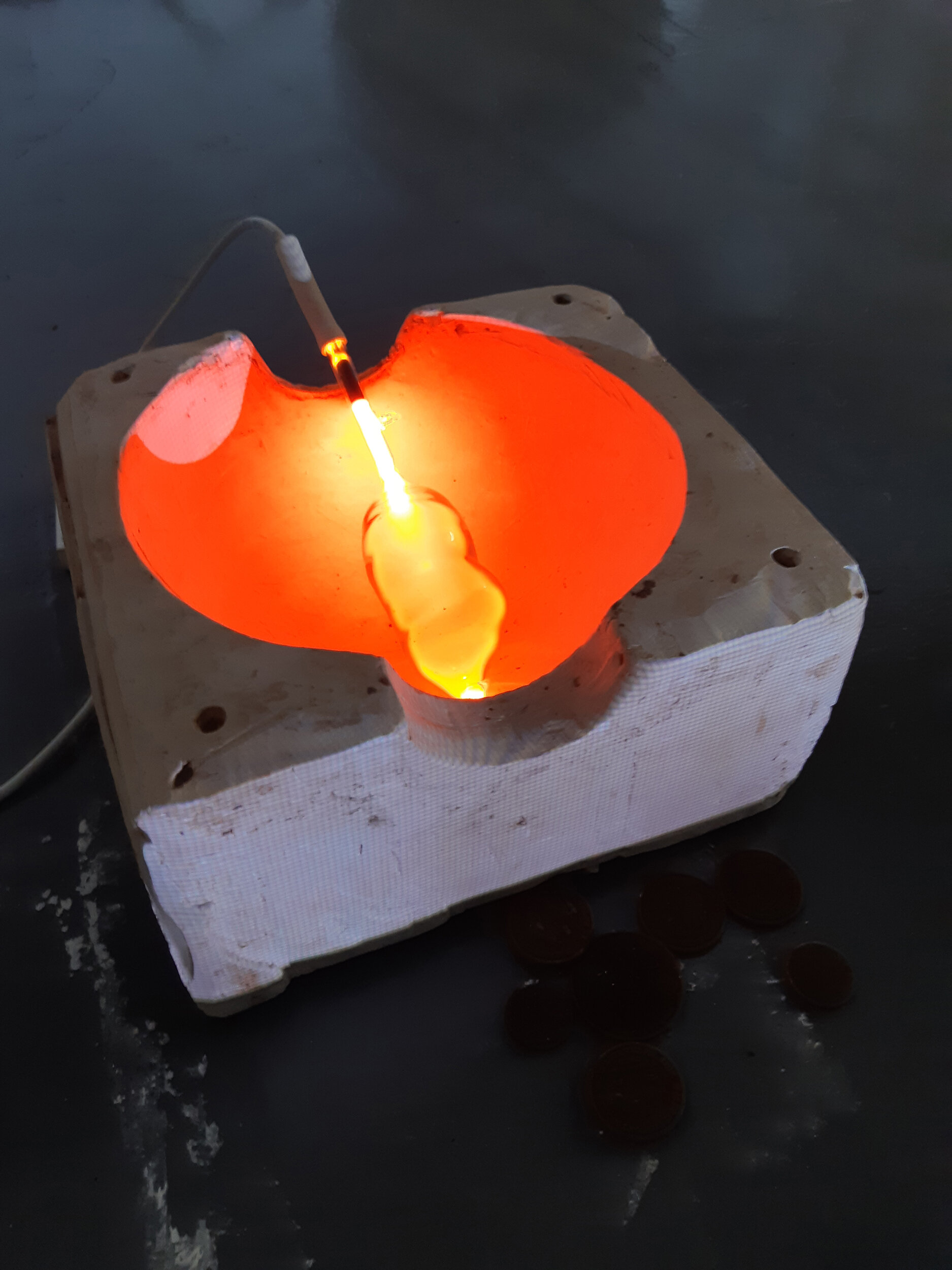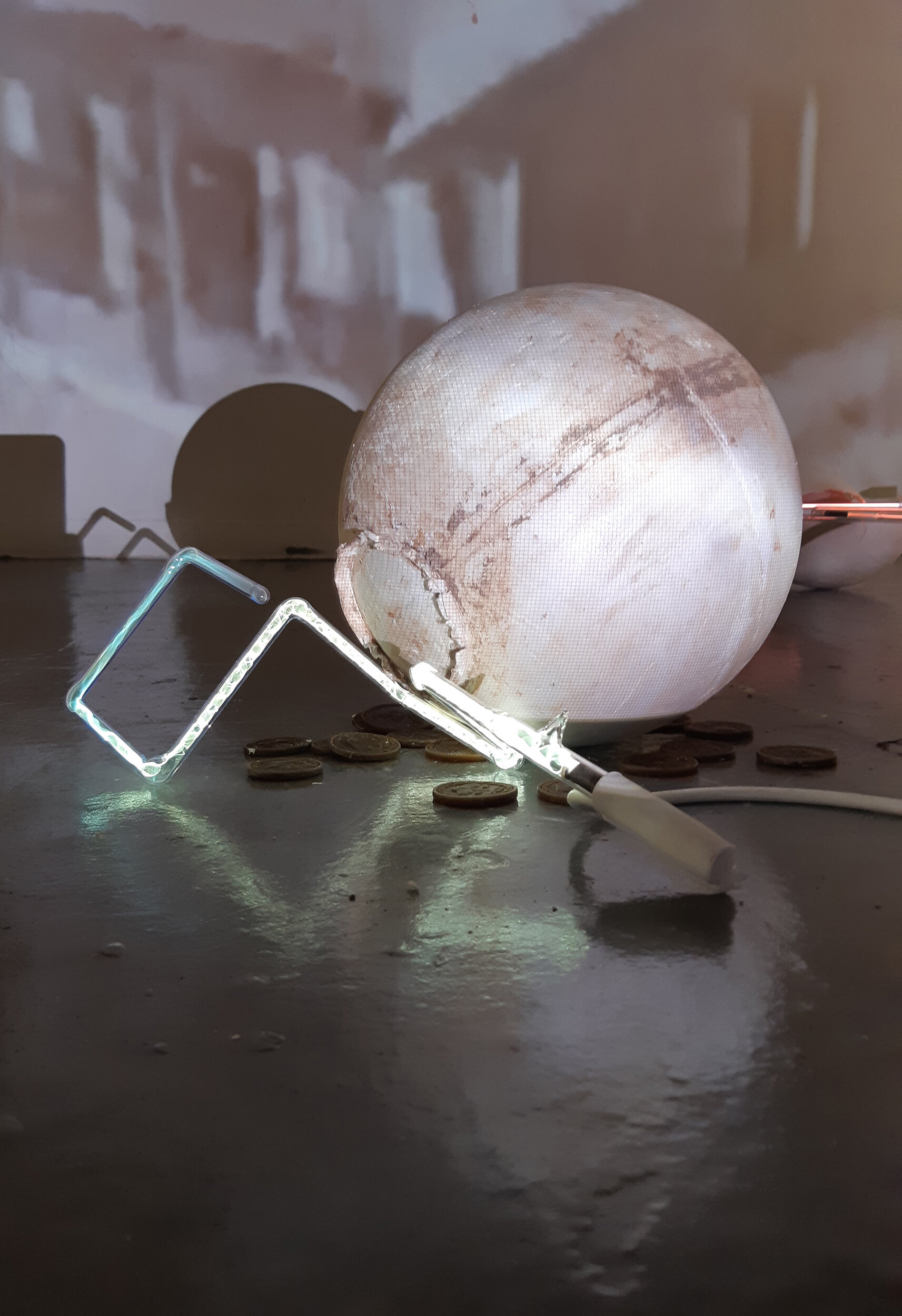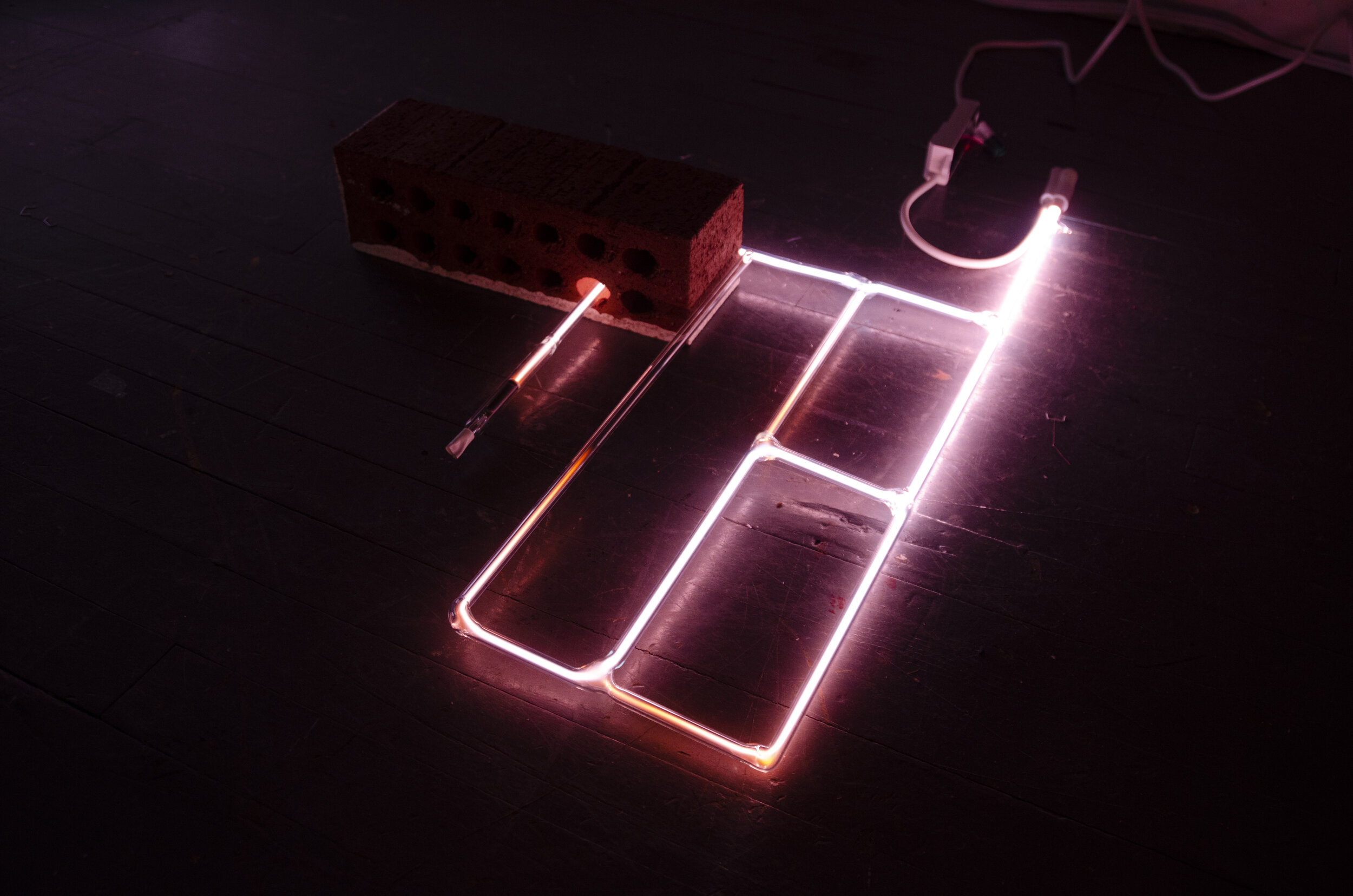Portrait of Josephine Lee
Josephine Lee
Informed by a lifetime of movement throughout the United States, Canada, and South Korea, Josephine Lee’s sculptures, installations, and performances investigate the psychic impact of cultural assimilation and naturalization through migration. Framing her research on the constructs of home, Lee examines how notions of place are entangled within politics of citizenship and national identity. Within this context, Lee implicates her materials, objects, and gestures in narratives of race and nationalism as an antecedent to a deeper examination of the inadequacies of representation, the complications of overlapping histories, and the complexity of unfolding spaces of home and belonging.
Lee holds graduate and undergraduate degrees in science and fine arts. She is the recipient of a BC Arts Council Artist Scholarship Award, the University of British Columbia Medal for Fine Arts, and the President’s Scholarship for Parsons School of Design in New York. Lee has exhibited and curated shows in Vancouver and New York, as well as exhibited in Maine, Washington DC, and documenta 14 in Kassel, Germany. In 2020, she was awarded the Oscar Kolin Fellowship, the Sparkbox Emerging Artist Residency, and the Vera G. List Sculpture Award.
Lee currently resides within the unceded territory of the Coast Salish Peoples, including the territories of the xʷməθkwəy̓əm (Musqueam), Skwxwú7mesh (Squamish), and Səl̓ílwətaʔ/Selilwitulh (Tsleil-Waututh) Nations.
Interview with Josephine Lee
Questions by Andreana Donahue
Can you tell us a bit about your background and where you grew up? In what ways have your early visual experiences and personal history led to art-making?
My family immigrated to the States when I was young. Largely due to economic hardship and residency status, we relocated continuously, and I grew up in various areas of Los Angeles, numerous cities and provinces throughout Eastern, Central, and Western Canada, and for a time in South Korea. This itinerant immigrant condition has had a deep impact on my practice, as much of my research today examines notions of home and belonging, and how they connect to issues of citizenship, land, and national identity.
Where are you currently based and what initially attracted you to working in this community? Are there any aspects of this place that have surfaced in your work?
Currently, I reside within the unceded territory of the Coast Salish Peoples, including the territories of the xʷməθkwəy̓əm (Musqueam), Skwxwú7mesh (Squamish), and Səl̓ílwətaʔ/Selilwitulh (Tsleil-Waututh) Nations, in Canada. I had lived here before during my second bachelor's degree. Returning after residing in New York has been somewhat uncanny, and it is interesting locating notions of belonging and unbelonging just from circling back to a place.
Can you tell us about your studio and what a typical day is like for you? Do you share space or ideas with other artists while working, or is it a more solitary routine?
When the pandemic hit and I had to return to Canada, I found an old backyard shed on craigslist. My partner and his friends helped me take it apart and build it back up in the front patio of our rental. We put in clear plastic sheets for the roof to let in light and installed a used door and windows. It took us chipping away during weekends and evenings for over six months to complete it, mostly with reclaimed lumber and materials. I do most of my work in this built space, as well as the local community arts center for ceramics.
Kirogi (the wild geese, high in the clean blue air, are heading home) (video still), performance, 2020
What criteria do you follow for selecting materials? Do you prefer to maintain a narrow focus or work across diverse media? How do you navigate the limitations and possibilities that result from this path? Can you walk us through your overall process? How would you describe your approach to manipulating materials? What about decision-making and editing?
I use whatever materials and methods that serve my work best, so the research always takes precedent. I like working in parts, putting in time to figure out what material, shape, or gesture is necessary, then pulling all the elements together in a space to see how they interact with one another. Personally, I enjoy the endless possibilities that a work can hold in the outset. Ultimately, the more I concretize my research, the clearer and more finite my choices become, and the trajectory of my research eventually guides the materials, processes, and eventual end point of the project.
Can you talk about some of the ongoing interests, imagery, and concepts that have informed your process and body of work over time? How do you anticipate your work progressing in the future?
A lot of my work pulls from a historical moment or place which I use as a point of origin from which to examine present-day socio-political conditions. There is a drive to transform these historical, material, and cultural signifiers that I gather into narratives of home, place, and nationalism. The next part of my work delves further into racialized experiences of ecology and the histories of environmental containment and contamination in North America, which runs from nuclear fallout to waste management to industrial pollution.
Do you pursue any collaborations, projects, or careers in addition to your studio practice? If so, are there connections between the two?
I am currently working on my research proposal for a PhD program in 2021. The program will connect directly to my studio practice, as it's designed for artists and scholars alike to conduct both creative and theoretical research, so I am excited to see what will happen.
Signs for a reasonable protest, vinyl, aluminium, 4 x 10’, 2016
As a result of the pandemic, many artists have experienced limited access to their studios or loss of exhibitions, income, or other opportunities. Has your way of working (or not working) shifted significantly during this time? Are there unexpected insights or particular challenges you’ve experienced?
When the pandemic began closing borders, I was forced to leave a lot of work and materials in New York. For a while, I had no place, studio, or job. Residencies and exhibitions were cancelled too. It was pretty rough. In those early months, I focused most of my energy on building my studio. I also spent a lot of time on my mental health, which for me meant walking, baking, and growing lettuce.
In a time that seems to be marked by uncertainty, collective anxiety, and increasing social unrest, why do you think the perspectives and contributions of artists remain meaningful? Do you feel a natural relationship exists between your work (or the role artists play more broadly) and confronting established systems - of power, cultural institutions, or otherwise?
I believe that one of the primary contributions that an artist makes is to delve deeply into the issues that pervade our lived experiences. So that through this seemingly incongruous and complicated visual language, we might confront and comprehend the oftentimes incomprehensible around us.
Upon him rattle the quiver, electronic sensors, tubing, skeleton wire, paper, plastic, 3 x 9’, 2017
Can you share some of your recent influences? Are there specific works - from visual art, literature, film, or music - that are important to you?
At this moment, I am reading Yellow Peril!: An Archive of Anti-Asian Fear by John Kuo Wei Tchen and Dylan Yeats; Trace: Memory, History, Race, and the American Landscape by Lauret Savoy; and Judith Butler's Precarious Life: The Powers of Mourning and Violence. In terms of films, I am always at least a year (to several) behind, but I started watching the miniseries Immigration Nation which has been brutal. As for music, I just bought a record of Bill Withers Live at Carnegie Hall, which I highly recommend.
Who are some contemporary artists you’re excited about? What are the best exhibitions you’ve seen in recent memory?
A lot of my peers are artists, and I'm always excited to see what they are up to. I want to mention two artist friends of mine, Caroline Garcia (currently artist in residence at the ISCP) and Matthew Ballantyne (based in Western Canada)—their works are incredible in very different ways. Matthew's work at the Morris and Helen Belkin Gallery earlier this year was memorable. Also, I was quite excited about Jin-Me Yoon's recent exhibition Untunnelling Vision at Truck Contemporary in Calgary. The last physical exhibition I saw in New York before the pandemic was Sam Lewitt's Dreamboat Dirtblock. The milled plexiglass sheets in that show were the bee's knees.
What are you working on in the studio right now? What’s coming up next for you?
I am preparing for two residencies and a show, all coming in the next three months, so much of my work right now is geared towards these immediate deadlines. I am looking forward to exploring and testing out new ideas again during my residencies and finishing up work for this exhibition in January, which had been delayed by the pandemic since May.








